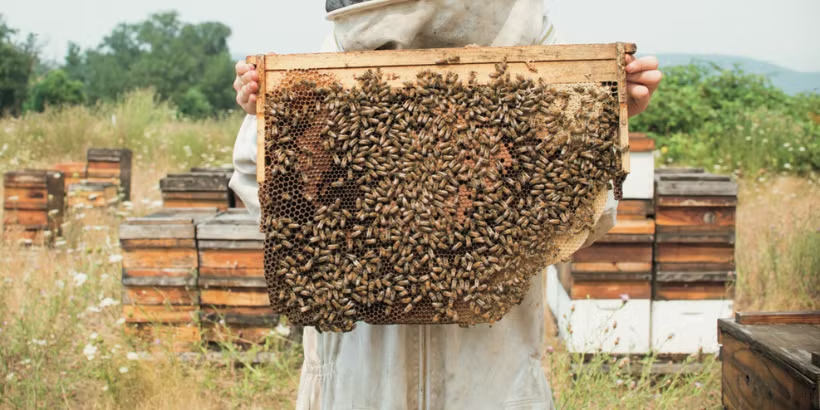For centuries, beekeepers have followed the same basic hive design—simple wooden boxes with minimal protection from the elements. While these traditional structures have stood the test of time, they weren’t built with energy efficiency, climate change, or bee stress in mind. With harsher winters, hotter summers, and declining pollinator populations, the need for innovation in hive construction has never been greater. One of the most impactful advancements today is the integration of thermal insulation into hive architecture, providing bees with a more stable and protective environment in all seasons.
Nature’s Blueprint for Thermal Regulation
In the wild, honeybee colonies don’t choose flimsy, exposed shelters. They instinctively seek deep tree hollows or rock crevices—natural structures that regulate temperature, buffer humidity, and offer consistent conditions year-round. These habitats absorb heat slowly, release it gradually, and keep the colony safe from rapid environmental swings. Mimicking this thermal performance is now central to the evolution of hive design, and the modern beehive with thermal insulation captures this principle effectively.
The Science Behind Hive Temperature Control
Bees maintain their brood area at a steady 34–35°C regardless of outside temperatures. In uninsulated hives, the thin wooden walls allow heat to escape in winter and flood in during summer. As a result, bees work overtime to warm or cool the hive, consuming more honey, increasing stress levels, and diverting energy from brood rearing. Insulated hives provide thermal resistance, helping maintain a more constant internal temperature and drastically reducing energy expenditure by the colony.
Winter Survival Depends on Heat Retention
Canadian winters are no joke, and colonies face significant risk when exposed to prolonged cold. In traditional hives, bees must cluster tightly and generate warmth through vibration—a process that depletes their honey stores. If the hive cools too rapidly overnight, colonies can freeze just inches from abundant food. Insulated hives slow heat loss, reduce cluster contraction, and help maintain optimal microclimates, especially in the upper boxes where food reserves are stored.
Summer Heat Stress and Comb Stability
Excess heat can be just as dangerous. During peak summer temperatures, interior hive temperatures can skyrocket without proper thermal protection. This can melt wax combs, disrupt brood development, and cause swarming or absconding. Thermal insulation mitigates these spikes, acting as a barrier against radiant heat and providing a cooler, more comfortable environment that reduces colony agitation and helps bees maintain productive routines even in extreme heat.
Moisture Management and Ventilation Strategies
Temperature regulation goes hand in hand with moisture control. In cold climates, warm air generated by bees can condense on inner walls, creating droplets that fall onto the cluster and cause chilling. Insulated hives reduce the risk of condensation by keeping internal temperatures above dew point and often incorporate passive ventilation systems that allow moist air to escape without sacrificing warmth. The result is a drier, healthier hive that requires less intervention from the beekeeper.
Energy Efficiency Translates to Better Health
Reduced energy output from the colony has direct implications on bee health. With less need to consume honey for heat, bees conserve calories for immune support, grooming, and brood feeding. This energy efficiency also leads to stronger spring populations, better foraging activity, and improved resilience against pathogens. Hives that naturally support thermal equilibrium promote long-term colony sustainability and reduce dependency on supplemental feeding.
The Economics of Insulated Hives
While thermally insulated hives cost more upfront, they often pay for themselves through improved colony retention, reduced losses, and lower resource demands. Overwintering success rates increase, spring build-up accelerates, and honey yields remain stable despite weather fluctuations. For both commercial and backyard beekeepers, these savings—in time, money, and bee life—add up quickly across multiple seasons.
What to Look for in an Insulated Hive
Not all insulated hives are created equal. High-performance models use non-toxic, breathable materials with high R-values, durable construction, and modular design for ease of use. Look for options that offer insulation on all sides (including the bottom and roof), built-in ventilation controls, and compatibility with standard beekeeping tools and accessories. It’s also wise to choose materials that are UV-resistant and weatherproof to withstand multiple winters and summers without degradation.
Shaping a Healthier Habitat for the Future
Thermal insulation is no longer a luxury—it’s a logical step forward in hive design, rooted in biology, supported by science, and aligned with the environmental realities bees face today. As keepers, we owe it to our colonies to provide shelter that does more than hold frames; it should protect, support, and adapt. By investing in hives that prioritize thermal balance, we move closer to a more responsible, sustainable, and successful approach to apiculture—one where bees can thrive, not just survive.
